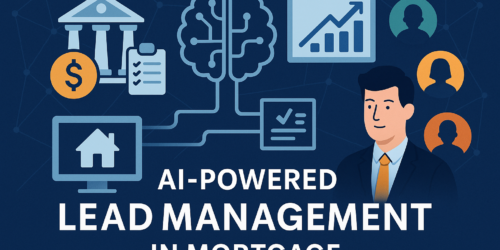What's in this article?

When interest rates rise, lead conversion often slows down. Potential customers become cautious about making big financial decisions like taking out a loan or mortgage. This is because higher rates mean higher costs over time, making the investment less appealing. However, even a slight rate drop can trigger a spike in activity, encouraging hesitant leads to move forward.
This is where the value of your aging lead portfolio comes in. Leads that didn’t convert during higher rate periods may become active again when rates drop, even slightly. Keeping these leads warm and re-engaging them at the right time can make a huge difference in your conversion rates.
Want to learn how to create effective mortgage lead conversion strategies for aging leads? Schedule a Demo Today!
How Rate Changes Affect Lead Behavior
Rate fluctuations and lead conversion have a dynamic relationship. When rates are high, many potential buyers delay their decisions, waiting for a better opportunity. They might still be interested, but they’re holding off until conditions improve.
However, even a small rate dip can create a sense of urgency. Those same leads who were waiting on the sidelines may now feel motivated to take action, fearing rates will rise again soon. This effect of rate changes on lead behavior can benefit your profitability.
This interest rate impact on lead conversion is particularly evident during periods of economic uncertainty. For example, between November and December, if there’s a temporary drop in rates, it often results in a sudden uptick in lead conversion as buyers try to lock in the lower rates. Recognizing and acting on these small windows of opportunity can significantly boost your sales.
Leveraging Your Aging Lead Portfolio
Your aging lead portfolio consists of leads that have shown interest in the past but didn’t convert for various reasons, including high rates. These leads represent a valuable asset because they’ve already engaged with your business and shown some level of interest. In a fluctuating rate environment, these leads can be re-engaged more effectively than cold leads.
Companies can use predictive analytics to segment these aging leads based on their past behavior and engagement levels. For instance, a lead that was active but dropped off when rates peaked might be more responsive when rates decrease. Targeting these leads with personalized offers and updates can increase your chances of conversion.
Read More: How AI-Powered Predictive Lead Scoring Helps Prioritize Leads and Improve Decision-Making
Strategies Rate Fluctuations and Lead Conversion
- Stay in Touch: Companies that want to take advantage of interest rate impact on lead conversion must realize regular communication is key. Send updates on market conditions and explain how even small rate changes could benefit your leads. This keeps your business top-of-mind when they’re ready to act.
- Segment Leads for Targeted Campaigns: Use predictive analytics to segment your leads based on their previous interactions and behavior. This allows you to craft messages that resonate with each group, making your outreach more effective.
- Personalized Messaging: Tailor your communication based on the lead’s previous interest and the current market situation. For example, if a lead was interested in refinancing when rates were high, let them know when rates drop and explain how much they could save.
- Timing Is Crucial: Be prepared to act quickly when rates change. A short-lived dip in rates can prompt a flurry of activity, so having your team ready to respond can make all the difference.
- Offer Value Beyond Rates: While rate changes are important, also highlight other benefits such as lower fees, improved loan terms, or exclusive offers. This helps to keep your leads interested, even if rates aren’t ideal.
Why It’s Important to Monitor Rate Changes Closely
Staying informed about the effect of rate changes on lead behavior allows you to be proactive rather than reactive. When you know what’s happening in the market, you can time your outreach and marketing efforts more effectively. This is especially important for aging leads, who may have gone cold during high-rate periods but are still interested in your products or services.
Monitoring these changes and responding with timely, relevant communication helps build trust and shows that you’re paying attention to their needs. It’s also an opportunity to position your business as a helpful resource, rather than just a sales pitch.
The Long-Term Value of a Well-Maintained Lead Portfolio
Your aging lead portfolio is a long-term asset. Leads that don’t convert immediately can still hold value down the line, especially in markets where conditions change frequently. Keeping these leads engaged and informed can increase the chances that they’ll convert when the timing is right. This helps with short-term sales and builds stronger, more resilient mortgage lead conversion strategies for the future.


